2017–18 UEFA Europa League
| Tournament details | |
|---|---|
| Dates |
June/July – August 2017 (qualifying) September 2017 – May/June 2018 (competition proper) |
| Teams |
48+8 (competition proper) 157+33 (expected) (total) (from 54 associations) |
The 2017–18 UEFA Europa League will be the 47th season of Europe's secondary club football tournament organised by UEFA, and the 9th season since it was renamed from the UEFA Cup to the UEFA Europa League.
A possible host city candidate for the Europa League final is reported to be Lyon, France, with the Parc Olympique Lyonnais as possible host stadium.[1][2][3] On 15 September 2016, UEFA announced that a decision regarding the 2018 final will be made at a later stage.[4]
The winners of the 2017–18 UEFA Europa League will automatically qualify for the 2018–19 UEFA Champions League group stage,[5] and also earn the right to play against the winners of the 2017–18 UEFA Champions League in the 2018 UEFA Super Cup.
Association team allocation
A total of 190 teams from 54 of the 55 UEFA member associations are expected to participate in the 2017–18 UEFA Europa League (the participation of teams from Kosovo, who became a UEFA member on 3 May 2016, is to be confirmed).[7] The association ranking based on the UEFA country coefficients is used to determine the number of participating teams for each association:[6]
- Associations 1–51 (except Liechtenstein) each have three teams qualify.
- Associations 52–54 each have two teams qualify.
- Liechtenstein have one team qualify (as it organises only a domestic cup and no domestic league).
- Moreover, 33 teams eliminated from the 2017–18 UEFA Champions League are transferred to the Europa League.
Starting from this season, Gibraltar are granted two spots instead of one in the Europa League.[8]
Association ranking
For the 2017–18 UEFA Europa League, the associations are allocated places according to their 2016 UEFA country coefficients, which takes into account their performance in European competitions from 2011–12 to 2015–16.[9][10]
Apart from the allocation based on the country coefficients, associations may have additional teams participating in the Europa League, as noted below:
- (CL) – Additional teams transferred from the Champions League
Final ranking as of 28 May 2016.[9][10]
|
|
|
Distribution
The table below shows the default access list.[11][12]
| Teams entering in this round | Teams advancing from previous round | Teams transferred from Champions League | |
|---|---|---|---|
| First qualifying round (100 teams) |
|
||
| Second qualifying round (66 teams) |
|
|
|
| Third qualifying round (58 teams) |
|
|
|
| Play-off round (44 teams) |
|
| |
| Group stage (48 teams) |
|
|
|
| Knockout phase (32 teams) |
|
|
The access list above is provisional, as changes will need to be made in the following cases:
- If the Champions League title holders or the Europa League title holders have qualified for the Europa League through domestic performance, their berth in the Europa League will be vacated (not replaced by another team from the same association), and cup winners of the highest-ranked associations will be moved to a later round accordingly.[13]
- If changes to the access list of the Champions League are made, the number of losers of the Champions League third qualifying round which are transferred to the Europa League may be increased or decreased from the default number of 15, which means changes to the access list of the Europa League will also need to be made.[14]
- Because a maximum of five teams from one association can enter the Champions League, if both the Champions League title holders and the Europa League title holders are from the same top three ranked association and finish outside the top four of their domestic league, the fourth-placed team of their association will be moved to the Europa League, which means changes to the access list of the Europa League will also need to be made.[15]
Redistribution rules
A Europa League place is vacated when a team qualifies for both the Champions League and the Europa League, or qualifies for the Europa League by more than one method. When a place is vacated, it is redistributed within the national association by the following rules (regulations Articles 3.03 and 3.04):[6]
- When the domestic cup winners (considered as the "highest-placed" qualifier within the national association with the latest starting round) also qualify for the Champions League, their Europa League place is vacated. As a result, the highest-placed team in the league which have not yet qualified for European competitions qualify for the Europa League, with the Europa League qualifiers which finish above them in the league moved up one "place".
- When the domestic cup winners also qualify for the Europa League through league position, their place through the league position is vacated. As a result, the highest-placed team in the league which have not yet qualified for European competitions qualify for the Europa League, with the Europa League qualifiers which finish above them in the league moved up one "place" if possible.
- For associations where a Europa League place is reserved for the League Cup winners, they always qualify for the Europa League as the "lowest-placed" qualifier. If the League Cup winners have already qualified for European competitions through other methods, this reserved Europa League place is taken by the highest-placed team in the league which have not yet qualified for European competitions.
Teams
The labels in the parentheses show how each team qualified for the place of its starting round:
- CW: Cup winners
- 2nd, 3rd, 4th, 5th, 6th, etc.: League position
- LC: League Cup winners
- PW: End-of-season European competition play-offs winners
- UCL: Transferred from the Champions League
- GS: Third-placed teams from the group stage
- PO: Losers from the play-off round
- Q3: Losers from the third qualifying round
Note: Teams in italics may still qualify for the 2017–18 UEFA Champions League, either through domestic performance, or by winning the 2016–17 UEFA Champions League or the 2016–17 UEFA Europa League.
- Notes
- ^ Belarus (BLR): Shakhtyor Soligorsk will enter the second qualifying round instead of the first qualifying round if they or BATE Borisov win the 2016–17 Belarusian Cup. Dinamo Minsk will enter the second qualifying round instead of the first qualifying round if they win the cup.
- ^ Republic of Ireland (IRL): Derry City are a club based in Northern Ireland, but will participate in the Europa League through one of the berths for the Republic of Ireland (any coefficient points they earn count toward Republic of Ireland and not Northern Ireland).
- ^ Sweden (SWE): AIK will enter the second qualifying round instead of the first qualifying round if they win the 2016–17 Svenska Cupen. IFK Norrköping will enter the second qualifying round instead of the first qualifying round if they win the cup.
Qualifying rounds
In the qualifying rounds and the play-off round, teams are divided into seeded and unseeded teams based on their 2017 UEFA club coefficients,[16][17] and then drawn into two-legged home-and-away ties. Teams from the same association cannot be drawn against each other.
First qualifying round
A total of 100 teams are expected to play in the first qualifying round.
 Dinamo Minsk CC: 10.975
Dinamo Minsk CC: 10.975 HJK CC: 10.530
HJK CC: 10.530 AIK CC: 9.945
AIK CC: 9.945 Shakhtyor Soligorsk CC: 7.475
Shakhtyor Soligorsk CC: 7.475 Ventspils CC: 5.725
Ventspils CC: 5.725 Odd CC: 5.665
Odd CC: 5.665 Kairat CC: TBD (5.550)
Kairat CC: TBD (5.550) KR CC: 5.175
KR CC: 5.175 IFK Norrköping CC: 4.945
IFK Norrköping CC: 4.945 Nõmme Kalju CC: 4.800
Nõmme Kalju CC: 4.800 Stjarnan CC: 4.175
Stjarnan CC: 4.175 Haugesund CC: 4.165
Haugesund CC: 4.165 Ordabasy CC: TBD (4.050)
Ordabasy CC: TBD (4.050) Levadia Tallinn CC: 4.050
Levadia Tallinn CC: 4.050 Irtysh Pavlodar CC: TBD (3.550)
Irtysh Pavlodar CC: TBD (3.550) Shamrock Rovers CC: TBD (3.065)
Shamrock Rovers CC: TBD (3.065) Jelgava CC: 2.975
Jelgava CC: 2.975 SJK CC: 2.780
SJK CC: 2.780 Cork City CC: TBD (2.565)
Cork City CC: TBD (2.565)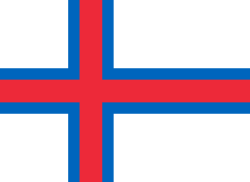 B36 Tórshavn CC: 2.450
B36 Tórshavn CC: 2.450 Derry City CC: TBD (2.315)
Derry City CC: TBD (2.315) VPS CC: 2.030
VPS CC: 2.030 Valur CC: 1.925
Valur CC: 1.925 Atlantas CC: 1.825
Atlantas CC: 1.825 Sūduva Marijampolė CC: 1.825
Sūduva Marijampolė CC: 1.825 Torpedo Kutaisi CC: 1.775
Torpedo Kutaisi CC: 1.775 Trakai CC: 1.575
Trakai CC: 1.575 NSÍ Runavík CC: 1.450
NSÍ Runavík CC: 1.450 KÍ CC: 0.700
KÍ CC: 0.700 Third-placed team of 2016–17 Austrian Football Bundesliga
Third-placed team of 2016–17 Austrian Football Bundesliga Third-placed team of 2016–17 Croatian First Football League
Third-placed team of 2016–17 Croatian First Football League Runners-up of 2016–17 Ekstraklasa
Runners-up of 2016–17 Ekstraklasa Third-placed team of 2016–17 Ekstraklasa
Third-placed team of 2016–17 Ekstraklasa Runners-up of 2016–17 Cypriot First Division
Runners-up of 2016–17 Cypriot First Division Third-placed team of 2016–17 Cypriot First Division
Third-placed team of 2016–17 Cypriot First Division Runners-up of 2016–17 Israeli Premier League
Runners-up of 2016–17 Israeli Premier League Third-placed team of 2016–17 Israeli Premier League
Third-placed team of 2016–17 Israeli Premier League Runners-up of 2016–17 Danish Superliga
Runners-up of 2016–17 Danish Superliga Winners of 2016–17 Danish Superliga Europa League play-offs
Winners of 2016–17 Danish Superliga Europa League play-offs Runners-up of 2016–17 Scottish Premiership
Runners-up of 2016–17 Scottish Premiership Third-placed team of 2016–17 Scottish Premiership
Third-placed team of 2016–17 Scottish Premiership Winners of 2016–17 Azerbaijan Cup
Winners of 2016–17 Azerbaijan Cup Runners-up of 2016–17 Azerbaijan Premier League
Runners-up of 2016–17 Azerbaijan Premier League Third-placed team of 2016–17 Azerbaijan Premier League
Third-placed team of 2016–17 Azerbaijan Premier League Winners of 2016–17 Serbian Cup
Winners of 2016–17 Serbian Cup Runners-up of 2016–17 Serbian SuperLiga
Runners-up of 2016–17 Serbian SuperLiga Third-placed team of 2016–17 Serbian SuperLiga
Third-placed team of 2016–17 Serbian SuperLiga Winners of 2016–17 Bulgarian Cup
Winners of 2016–17 Bulgarian Cup Runners-up of 2016–17 First Professional Football League
Runners-up of 2016–17 First Professional Football League Winners of 2016–17 First Professional Football League Europa League play-offs
Winners of 2016–17 First Professional Football League Europa League play-offs Winners of 2016–17 Slovenian Football Cup
Winners of 2016–17 Slovenian Football Cup Runners-up of 2016–17 Slovenian PrvaLiga
Runners-up of 2016–17 Slovenian PrvaLiga Third-placed team of 2016–17 Slovenian PrvaLiga
Third-placed team of 2016–17 Slovenian PrvaLiga Winners of 2016–17 Slovak Cup
Winners of 2016–17 Slovak Cup Runners-up of 2016–17 Slovak First Football League
Runners-up of 2016–17 Slovak First Football League Third-placed team of 2016–17 Slovak First Football League
Third-placed team of 2016–17 Slovak First Football League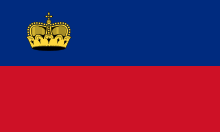 Winners of 2016–17 Liechtenstein Cup
Winners of 2016–17 Liechtenstein Cup Winners of 2016–17 Magyar Kupa
Winners of 2016–17 Magyar Kupa Runners-up of 2016–17 Nemzeti Bajnokság I
Runners-up of 2016–17 Nemzeti Bajnokság I Third-placed team of 2016–17 Nemzeti Bajnokság I
Third-placed team of 2016–17 Nemzeti Bajnokság I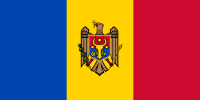 Winners of 2016–17 Moldovan Cup
Winners of 2016–17 Moldovan Cup Runners-up of 2016–17 Moldovan National Division
Runners-up of 2016–17 Moldovan National Division Third-placed team of 2016–17 Moldovan National Division
Third-placed team of 2016–17 Moldovan National Division Losers of 2016 Umaglesi Liga Championship final
Losers of 2016 Umaglesi Liga Championship final Winners of 2016 Umaglesi Liga Europa League play-offs
Winners of 2016 Umaglesi Liga Europa League play-offs Winners of 2016–17 Bosnia and Herzegovina Football Cup
Winners of 2016–17 Bosnia and Herzegovina Football Cup Runners-up of 2016–17 Premier League of Bosnia and Herzegovina
Runners-up of 2016–17 Premier League of Bosnia and Herzegovina Third-placed team of 2016–17 Premier League of Bosnia and Herzegovina
Third-placed team of 2016–17 Premier League of Bosnia and Herzegovina Winners of 2016–17 Albanian Cup
Winners of 2016–17 Albanian Cup Runners-up of 2016–17 Albanian Superliga
Runners-up of 2016–17 Albanian Superliga Third-placed team of 2016–17 Albanian Superliga
Third-placed team of 2016–17 Albanian Superliga Winners of 2016–17 Macedonian Football Cup
Winners of 2016–17 Macedonian Football Cup Runners-up of 2016–17 Macedonian First Football League
Runners-up of 2016–17 Macedonian First Football League Third-placed team of 2016–17 Macedonian First Football League
Third-placed team of 2016–17 Macedonian First Football League Winners of 2016–17 Latvian Football Cup
Winners of 2016–17 Latvian Football Cup Winners of 2016–17 Luxembourg Cup
Winners of 2016–17 Luxembourg Cup Runners-up of 2016–17 Luxembourg National Division
Runners-up of 2016–17 Luxembourg National Division Third-placed team of 2016–17 Luxembourg National Division
Third-placed team of 2016–17 Luxembourg National Division Winners of 2016–17 Montenegrin Cup
Winners of 2016–17 Montenegrin Cup Runners-up of 2016–17 Montenegrin First League
Runners-up of 2016–17 Montenegrin First League Third-placed team of 2016–17 Montenegrin First League
Third-placed team of 2016–17 Montenegrin First League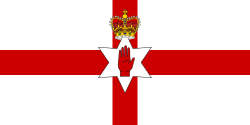 Winners of 2016–17 Irish Cup
Winners of 2016–17 Irish Cup Runners-up of 2016–17 NIFL Premiership
Runners-up of 2016–17 NIFL Premiership Winners of 2016–17 NIFL Premiership Europa League play-offs
Winners of 2016–17 NIFL Premiership Europa League play-offs Winners of 2016–17 Estonian Cup
Winners of 2016–17 Estonian Cup Winners of 2016–17 Armenian Cup
Winners of 2016–17 Armenian Cup Runners-up of 2016–17 Armenian Premier League
Runners-up of 2016–17 Armenian Premier League Third-placed team of 2016–17 Armenian Premier League
Third-placed team of 2016–17 Armenian Premier League Winners of 2016–17 Maltese FA Trophy
Winners of 2016–17 Maltese FA Trophy Runners-up of 2016–17 Maltese Premier League
Runners-up of 2016–17 Maltese Premier League Third-placed team of 2016–17 Maltese Premier League
Third-placed team of 2016–17 Maltese Premier League Winners of 2016–17 Welsh Cup
Winners of 2016–17 Welsh Cup Runners-up of 2016–17 Welsh Premier League
Runners-up of 2016–17 Welsh Premier League Winners of 2016–17 Welsh Premier League Europa League play-offs
Winners of 2016–17 Welsh Premier League Europa League play-offs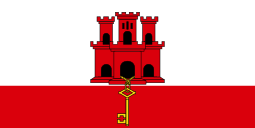 Winners of 2017 Rock Cup
Winners of 2017 Rock Cup Runners-up of 2016–17 Gibraltar Premier Division
Runners-up of 2016–17 Gibraltar Premier Division Winners of 2017 Copa Constitució
Winners of 2017 Copa Constitució Runners-up of 2016–17 Primera Divisió
Runners-up of 2016–17 Primera Divisió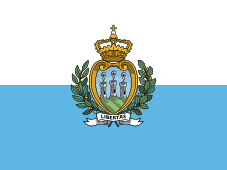 Winners of 2016–17 Coppa Titano
Winners of 2016–17 Coppa Titano Runners-up of 2016–17 Campionato Sammarinese di Calcio
Runners-up of 2016–17 Campionato Sammarinese di Calcio
Note: UEFA club coefficient (CC) at the end of 2016–17 season, which is used for seeding, is listed in italics.[16][17]
Second qualifying round
A total of 66 teams are expected to play in the second qualifying round: 16 teams which enter in this round, and the 50 winners of the first qualifying round.
 Brann CC: 3.665
Brann CC: 3.665 Winners of 2016–17 Eredivisie Europa League play-offs
Winners of 2016–17 Eredivisie Europa League play-offs Fourth-placed team of 2016–17 Süper Lig
Fourth-placed team of 2016–17 Süper Lig Fourth-placed team of 2016–17 Swiss Super League
Fourth-placed team of 2016–17 Swiss Super League Fourth-placed team of 2016–17 Czech First League
Fourth-placed team of 2016–17 Czech First League Fourth-placed team of 2016–17 Superleague Greece
Fourth-placed team of 2016–17 Superleague Greece Fourth-placed team of 2016–17 Liga I
Fourth-placed team of 2016–17 Liga I Runners-up of 2016–17 Austrian Football Bundesliga
Runners-up of 2016–17 Austrian Football Bundesliga Runners-up of 2016–17 Croatian First Football League
Runners-up of 2016–17 Croatian First Football League Winners of 2016–17 Polish Cup
Winners of 2016–17 Polish Cup Winners of 2016–17 Cypriot Cup
Winners of 2016–17 Cypriot Cup Winners of 2016–17 Belarusian Cup
Winners of 2016–17 Belarusian Cup Winners of 2016–17 Svenska Cupen
Winners of 2016–17 Svenska Cupen Winners of 2016–17 Israel State Cup
Winners of 2016–17 Israel State Cup Winners of 2016–17 Danish Cup
Winners of 2016–17 Danish Cup Winners of 2016–17 Scottish Cup
Winners of 2016–17 Scottish Cup
Third qualifying round
A total of 58 teams are expected to play in the third qualifying round: 25 teams which enter in this round, and the 33 winners of the second qualifying round.
 Sixth-placed team of 2016–17 La Liga
Sixth-placed team of 2016–17 La Liga Sixth-placed team of 2016–17 Bundesliga
Sixth-placed team of 2016–17 Bundesliga Winners of 2016–17 EFL Cup
Winners of 2016–17 EFL Cup Fifth-placed team of 2016–17 Serie A
Fifth-placed team of 2016–17 Serie A Fourth-placed team of 2016–17 Primeira Liga
Fourth-placed team of 2016–17 Primeira Liga Fifth-placed team of 2016–17 Primeira Liga
Fifth-placed team of 2016–17 Primeira Liga Fourth-placed team of 2016–17 Ligue 1
Fourth-placed team of 2016–17 Ligue 1 Winners of 2016–17 Coupe de la Ligue
Winners of 2016–17 Coupe de la Ligue Third-placed team of 2016–17 Russian Premier League
Third-placed team of 2016–17 Russian Premier League Fourth-placed team of 2016–17 Russian Premier League
Fourth-placed team of 2016–17 Russian Premier League Third-placed team of 2016–17 Ukrainian Premier League
Third-placed team of 2016–17 Ukrainian Premier League Fourth-placed team of 2016–17 Ukrainian Premier League
Fourth-placed team of 2016–17 Ukrainian Premier League.svg.png) Third-placed team of 2016–17 Belgian First Division A
Third-placed team of 2016–17 Belgian First Division A.svg.png) Winners of 2016–17 Belgian First Division A Europa League play-offs
Winners of 2016–17 Belgian First Division A Europa League play-offs Third-placed team of 2016–17 Eredivisie
Third-placed team of 2016–17 Eredivisie Third-placed team of 2016–17 Süper Lig
Third-placed team of 2016–17 Süper Lig Third-placed team of 2016–17 Swiss Super League
Third-placed team of 2016–17 Swiss Super League Winners of 2016–17 Czech Cup
Winners of 2016–17 Czech Cup Third-placed team of 2016–17 Czech First League
Third-placed team of 2016–17 Czech First League Winners of 2016–17 Greek Football Cup
Winners of 2016–17 Greek Football Cup Third-placed team of 2016–17 Superleague Greece
Third-placed team of 2016–17 Superleague Greece Winners of 2016–17 Cupa României
Winners of 2016–17 Cupa României Third-placed team of 2016–17 Liga I
Third-placed team of 2016–17 Liga I Winners of 2016–17 Austrian Cup
Winners of 2016–17 Austrian Cup Winners of 2016–17 Croatian Football Cup
Winners of 2016–17 Croatian Football Cup
Play-off round
A total of 44 teams are expected to play in the play-off round: the 29 winners of the third qualifying round, and the 15 losers of the 2017–18 UEFA Champions League third qualifying round.
Group stage
The 48 teams are drawn into twelve groups of four, with the restriction that teams from the same association cannot be drawn against each other. For the draw, the teams are seeded into four pots based on their 2017 UEFA club coefficients.[16][17] If the title holders enter the group stage after losing in the Champions League play-off round, they are automatically seeded into Pot 1 (regulations Article 13.05).[6]
In each group, teams play against each other home-and-away in a round-robin format. The group winners and runners-up advance to the round of 32, where they are joined by the eight third-placed teams of the 2017–18 UEFA Champions League group stage.
A total of 48 teams play in the group stage: 16 teams which enter in this stage, the 22 winners of the play-off round, and the 10 losers of the 2017–18 UEFA Champions League play-off round.
 Winners of 2016–17 Copa del Rey
Winners of 2016–17 Copa del Rey Fifth-placed team of 2016–17 La Liga
Fifth-placed team of 2016–17 La Liga Winners of 2016–17 DFB-Pokal
Winners of 2016–17 DFB-Pokal Fifth-placed team of 2016–17 Bundesliga
Fifth-placed team of 2016–17 Bundesliga Winners of 2016–17 FA Cup
Winners of 2016–17 FA Cup Fifth-placed team of 2016–17 Premier League
Fifth-placed team of 2016–17 Premier League Winners of 2016–17 Coppa Italia
Winners of 2016–17 Coppa Italia Fourth-placed team of 2016–17 Serie A
Fourth-placed team of 2016–17 Serie A Winners of 2016–17 Taça de Portugal
Winners of 2016–17 Taça de Portugal Winners of 2016–17 Coupe de France
Winners of 2016–17 Coupe de France Winners of 2016–17 Russian Cup
Winners of 2016–17 Russian Cup Winners of 2016–17 Ukrainian Cup
Winners of 2016–17 Ukrainian Cup.svg.png) Winners of 2016–17 Belgian Cup
Winners of 2016–17 Belgian Cup Winners of 2016–17 KNVB Cup
Winners of 2016–17 KNVB Cup Winners of 2016–17 Turkish Cup
Winners of 2016–17 Turkish Cup Winners of 2016–17 Swiss Cup
Winners of 2016–17 Swiss Cup
Knockout phase
In the knockout phase, teams play against each other over two legs on a home-and-away basis, except for the one-match final. The mechanism of the draws for each round is as follows:
- In the draw for the round of 32, the twelve group winners and the four third-placed teams from the Champions League group stage with the better group records are seeded, and the twelve group runners-up and the other four third-placed teams from the Champions League group stage are unseeded. The seeded teams are drawn against the unseeded teams, with the seeded teams hosting the second leg. Teams from the same group or the same association cannot be drawn against each other.
- In the draws for the round of 16 onwards, there are no seedings, and teams from the same group or the same association can be drawn against each other.
See also
References
- ↑ http://www.football365.fr/finale-2018-rendez-a-lyon-2697783.html
- ↑ http://www.mundodeportivo.com/futbol/internacional/20160915/41322745015/kiev-sede-de-la-final-de-la-champions-2017-18.html
- ↑ http://www.marca.com/futbol/2016/09/15/57da667a268e3e37458b45a5.html
- ↑ http://www.uefa.org/mediaservices/newsid=2404974.html
- ↑ "Evolution of UEFA club competitions from 2018". UEFA.com. 26 August 2016.
- 1 2 3 4 "Regulations of the UEFA Europa League 2015/16 Season" (PDF). UEFA.com. 1 May 2015.
- ↑ "Football Federation of Kosovo joins UEFA". UEFA. 3 May 2016.
- ↑ "Gibraltar gains an additional spot in the Europa League". Gibraltar Football Association. 20 September 2016.
- 1 2 "Country coefficients 2015/16". UEFA.com.
- 1 2 "UEFA Country Ranking 2016". Bert Kassies. Retrieved 28 May 2016.
- ↑ "Preliminary Access List 2015/16" (PDF). Bert Kassies.
- ↑ "Access list 2015/2016". Bert Kassies.
- ↑ "Distribution details". UEFA.org. 23 March 2015.
- ↑ "UEFA Access List 2015/18 with explanations" (PDF). Bert Kassies.
- ↑ "How the Europa League winners will enter the Champions League". UEFA.com. 27 February 2015.
- 1 2 3 "Club coefficients". UEFA.com.
- 1 2 3 "UEFA Team Ranking 2017". Bert Kassies.
External links
- UEFA Europa League (official website)